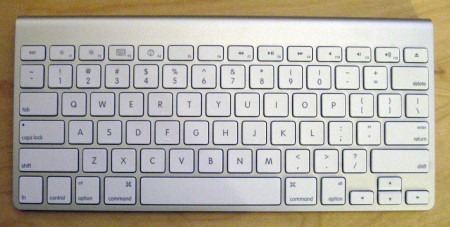
- Windows mac keyboard control end mac os x#
- Windows mac keyboard control end full#
- Windows mac keyboard control end Pc#
- Windows mac keyboard control end windows#
The substitutions let you perform the same actions you can do in Windows. The solution is to use specific substitutions, as shown in the table below.

This is a problem, because many of these keys are used in Excel shortcuts. Unless you're using an extended keyboard, keys like Home, End, backspace, Page up, and Page down are nowhere to be found.

Missing keysĪnother difference that may trip you up on a Mac is certain keys are missing. Personally, I like using the function keys to control the computer, so I leave this setting alone, and just the fn key when needed in Excel. In essence, this setting reverses behavior so that you need to use fn to control the Mac. If you do this, however, note that you won't be able to use function keys for things like Brightness, Volume, etc. Here you can check a box that will that will change function key behavior to work like "standard function keys". If you really hate using the fn key, you can change this behavior by changing a preference at System Preferences > Keyboard. You'll find the fn key in the lower left on your keyboard. To make function keys work like you expect in Excel, you need to add a key: the function or fn key. Why?īy default, Function keys on a Mac control the computer itself, things like screen brightness, volume, video pause and play, and so on. This means that if press only the function keys in Excel, you'll end up controlling the Mac, and not Excel. For example, you can use F1 for help, F7 for spelling, and shift + F3 to insert a function. But if you try these shortcuts directly on a Mac, they don't work. Standard Mac keyboard with 12 function keysĪs you know, function keys are uses for many shortcuts in Excel. These keys sit at the top of the keyboard and are labeled F1 to F12 on standard keyboards and F13, F14 and higher on extended keyboards.
Windows mac keyboard control end windows#
Like their counterparts in the Windows world, Mac keyboards have function keys. The table below shows some example shortcuts with a translation. You'll see these symbols in menus across all applications, so they're not specific to Excel. There really aren't too many symbols, so I recommend that you bite the bullet and memorize them. The Mac Finder – abbreviations appear in all applications, not just Excel For example, the Command key is abbreviated as ⌘, the Control key with ⌃, and the option key as ⌥. These symbols have a long history on the Mac, and you'll find them in menus everywhere. One of more confusing aspects of keyboard shortcuts on the Mac are the symbols you'll see for certain keys. To achieve that using a MacBook keyboard inside a Remote Desktop session, press Fn+Deleteĭo you want to master Batch Files programming? Look no further, the Batchography is the right book for you.Īvailable in print or e-book editions from Amazon.Also see: Excel shortcuts on the Mac // 3 minute video 1.
Windows mac keyboard control end Pc#
The “Delete” key on a PC keyboard lets you delete the character in front of the cursor. In the Mac keyboard, there is only the “delete” key which is the equivalent of the BackSpace key on a PC keyboard. The “Fn + Up/Down” equivalent on the Mac keyboard lets you do the same. PageUp or PageDown keys let you scroll one page up or down in a document. Pressing Ctrl+Home or Ctrl+End will take you to the top or the bottom of a document or file.
Windows mac keyboard control end full#
Pressing the Fn key with the left / right arrow keys will emulate the HOME and END keys on a full PC keyboard. Press for instance: “Command+R” to trigger the Windows Run dialog, etc… The “Command” key is like the “Win” key, it triggers the Windows Start Menu. The following table will tell you what keys combination you can use on a MacBook keyboard to get the same behavior as if you were using a regular PC keyboard: PC keyboard hotkey Make sure your global keyboard hotkeys are unassigned (from the System Preferences / Keyboard / Shortcuts) before you proceed. Very Important: Some of the hotkeys below conflict with your macOS’s default global hotkeys. Make sure you use the RDP Client to remote into the Windows Machine in order for the following keyboard shortcuts to work. This is different from the MacBook’s “Delete” key (which is equivalent to the “Backspace” key). What is important to know is that when using a MacBook’s keyboard, you don’t have all the keys that you usually have on a PC keyboard.Įssentially, you are missing the following keys:
Windows mac keyboard control end mac os x#
In this blog post, I am going to share with you how to get the missing keyboard keys that let you work in MS Windows via the remote desktop client under Mac OS X with the MacBook’s keyboard.


 0 kommentar(er)
0 kommentar(er)
